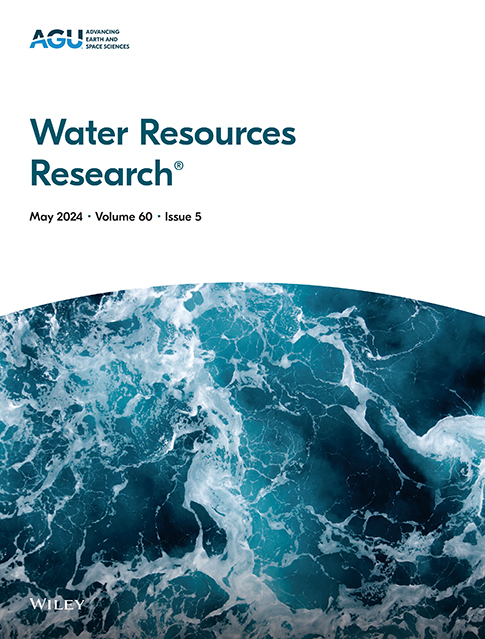Tidal Influences on Temperature Dynamics and Heat Exchange in Coastal Wetlands
IF 4.6
1区 地球科学
Q2 ENVIRONMENTAL SCIENCES
引用次数: 0
Abstract
Soil temperature is crucial for the ecological functions of coastal wetlands. While the impact of tides on porewater flow is well recognized, their effect on soil temperature, which is also closely related to hydrodynamic processes, has not been sufficiently explored. This study investigates how dynamic tidal and atmospheric conditions interact to drive temperature variations in coastal wetlands, based on both laboratory experiments and numerical simulations. The results reveal that temperature plumes develop near creek banks, where the annual mean soil temperature closely correlates with tidal temperature. Tide-induced water circulation enhances local heat transfer and mixing, leading to moderate annual temperature ranges in areas close to creeks. In contrast, surface soil temperatures across the wetland platform are closer to atmospheric conditions in both annual mean values and ranges. At the field scale, tide-induced advective heat exchange is apparent, particularly near creeks. However, its net impact on the overall heat balance is relatively limited compared to the conductive heat flux at the sediment-water interface. The study also highlights the role of macropores in enhancing local temperature fluctuations by augmenting advective heat exchange and increasing heat capacity. Additionally, increased hydraulic and thermal conductivities in wetland sediments could result in more efficient temperature transfer and larger temperature ranges in deeper soil layers. These findings advance our understanding of the hydrodynamic and thermal processes in coastal wetlands coupled with benthic bioturbation.土壤温度对沿岸湿地的生态功能至关重要。虽然潮汐对孔隙水流的影响已得到公认,但潮汐对土壤温度的影响还没有得到充分探讨,而土壤温度也与水动力过程密切相关。本研究通过实验室实验和数值模拟,探讨了动态潮汐和大气条件如何相互作用,导致沿岸湿地的温度变化。结果表明,温度羽流在溪岸附近形成,那里的年平均土壤温度与潮汐温度密切相关。潮汐引起的水循环加强了当地的热量传递和混合,导致靠近溪流的地区年温度范围适中。相比之下,整个湿地平台的表层土壤温度在年平均值和范围上都更接近大气条件。在实地尺度上,潮汐引起的平流热交换非常明显,尤其是在溪流附近。不过,与沉积物-水界面的传导热通量相比,潮汐对整体热平衡的净影响相对有限。该研究还强调了大孔隙在通过增强平流热交换和增加热容量来加强局部温度波动方面的作用。此外,湿地沉积物中水力和热传导率的增加可能会导致更有效的温度传递和更深土层中更大的温度范围。这些发现加深了我们对沿海湿地水动力和热过程以及底栖生物扰动的理解。
本文章由计算机程序翻译,如有差异,请以英文原文为准。
求助全文
约1分钟内获得全文
求助全文
来源期刊

Water Resources Research
环境科学-湖沼学
CiteScore
8.80
自引率
13.00%
发文量
599
审稿时长
3.5 months
期刊介绍:
Water Resources Research (WRR) is an interdisciplinary journal that focuses on hydrology and water resources. It publishes original research in the natural and social sciences of water. It emphasizes the role of water in the Earth system, including physical, chemical, biological, and ecological processes in water resources research and management, including social, policy, and public health implications. It encompasses observational, experimental, theoretical, analytical, numerical, and data-driven approaches that advance the science of water and its management. Submissions are evaluated for their novelty, accuracy, significance, and broader implications of the findings.
 求助内容:
求助内容: 应助结果提醒方式:
应助结果提醒方式:


